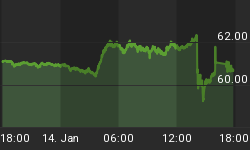As Republicans and Democrats slug it out over the future course of U.S. government spending, deficits and debt, we here at THE CONTRARIAN TAKE cannot help but wonder if Washington truly grasps the enormity of the government's increasingly fragile financial condition, whether they truly are seeking a solution to the government's mounting debt problem. So far Washington has done nothing to address these issues. We think time is running out...
The Republicans entered the year with their Pledge to America, to cut a $100 billion off of the government's 2011 fiscal budget. Despite that paltry sum, the Democrats wanted nothing to do with it. So, after months of political grandstanding, including threats by the Republican leadership to shut the government down if their spending demands were not met, the Republicans got just $38.5 billion in spending cuts. To put this number into perspective, according the Congressional Budget Office (CBO), fiscal 2011 government outlays are projected to be $3.6 trillion, the government deficit a whopping $1.4 trillion. Washington's answer to this fiscal malaise - a $38.5 billion spending cut, a spend itself some $175 billion more than fiscal 2010. Worse still, according to that same CBO, it seems now that that $38.5 billion spending cut will be largely negated by higher than estimated spending in other government programs. After all the hoopla, nothing.
So we ask... Is the U.S. government's fiscal plight really without a solution?
The Republicans, at least on paper the champions of fiscal sanity, say there is. The solution they say is to attack the problem in the 2012 budget. Enter House Budget Committee Chair Paul Ryan's The Path to Prosperity. That plan purport's to cut spending by $5.8 trillion over the next 10 years while generally holding the line on taxes. $5.8 trillion is a pretty big number. But while we applaud the Republicans' effort to meaningfully attack Washington's borrow and spend largesse, including downsizing the financial time bombs that are Medicare and Medicaid, the fact is the plan doesn't actually cut the government's spending bill. You see, those cuts are merely cuts to the CBO's projected baseline spend, a baseline that has government outlays growing at an annual average rate of $205 billion per year (4.6% compounded) through 2021. And while Ryan's plan grows government outlays at a more modest annual rate of $110 billion per year (2.7% compounded), grow that spend it does. More to the point, given that the 10-year compounded growth rate in government outlays ending fiscal year 2010 was 6.8%, and that over the last 5 year, 10 year and 25 year periods that 10 year growth rate averaged 6.3%, 5.3% and 5.9% respectively, we cannot help but take these spending projections with a rather large grain of salt. As for those worrisome deficits and their long-term impact on the government's debt footings, there is a lot not to like. Even on some optimistic revenue assumptions, Ryan's plan will rack up $5.1 trillion in red ink over the next 10 years, bringing the government's gross Treasury debt from today's $14.3 trillion to plus $20 trillion by 2021.
In a dramatic turnaround from his February 2012 budget proposal, President Obama says not so fast Republicans, the Democrats have a plan too. In an April 13th speech that served as the Democrats' opening bid for negotiations with the Republicans over the nation's fiscal future, the President unveiled a plan to cut the U.S. government's deficit by $4 trillion over the next 12 years. Not spending, the deficit. To do that the President would cut government outlays by $3 trillion and pump government tax receipts by $1 trillion. Putting those numbers on Ryan's 10-year time horizon, this equates to $2.5 trillion in spending cuts and $833 billion in tax hikes. Not only does the President's plan promise less in terms of top line spend savings, but the plan does little to reduce the government's footprint in the economy. In fact, while the President concedes the need to make government more efficient, including citing the government's massive entitlement programs, he essentially argues for the government's continued reach underscored by his desire to fund that reach by increasing taxes on higher income Americans.
As to the efficacy of these plans, to really solve the U.S. government's debt woes, we have these thoughts...
More commentary continued at http://blogs.forbes.com/michaelpollaro/2011/04/19/the-us-governments-fiscal-plight-an-enormous-problem-without-a-solution















